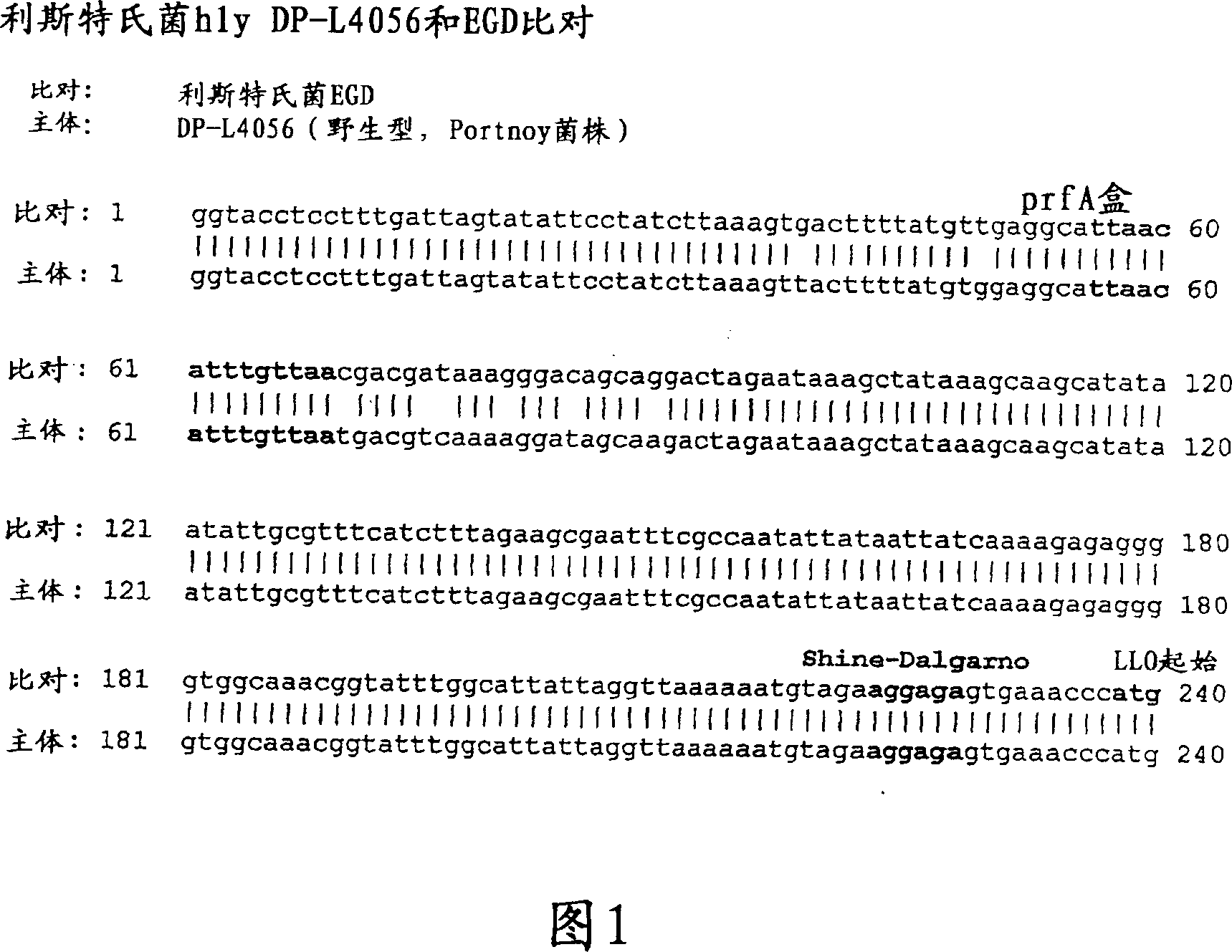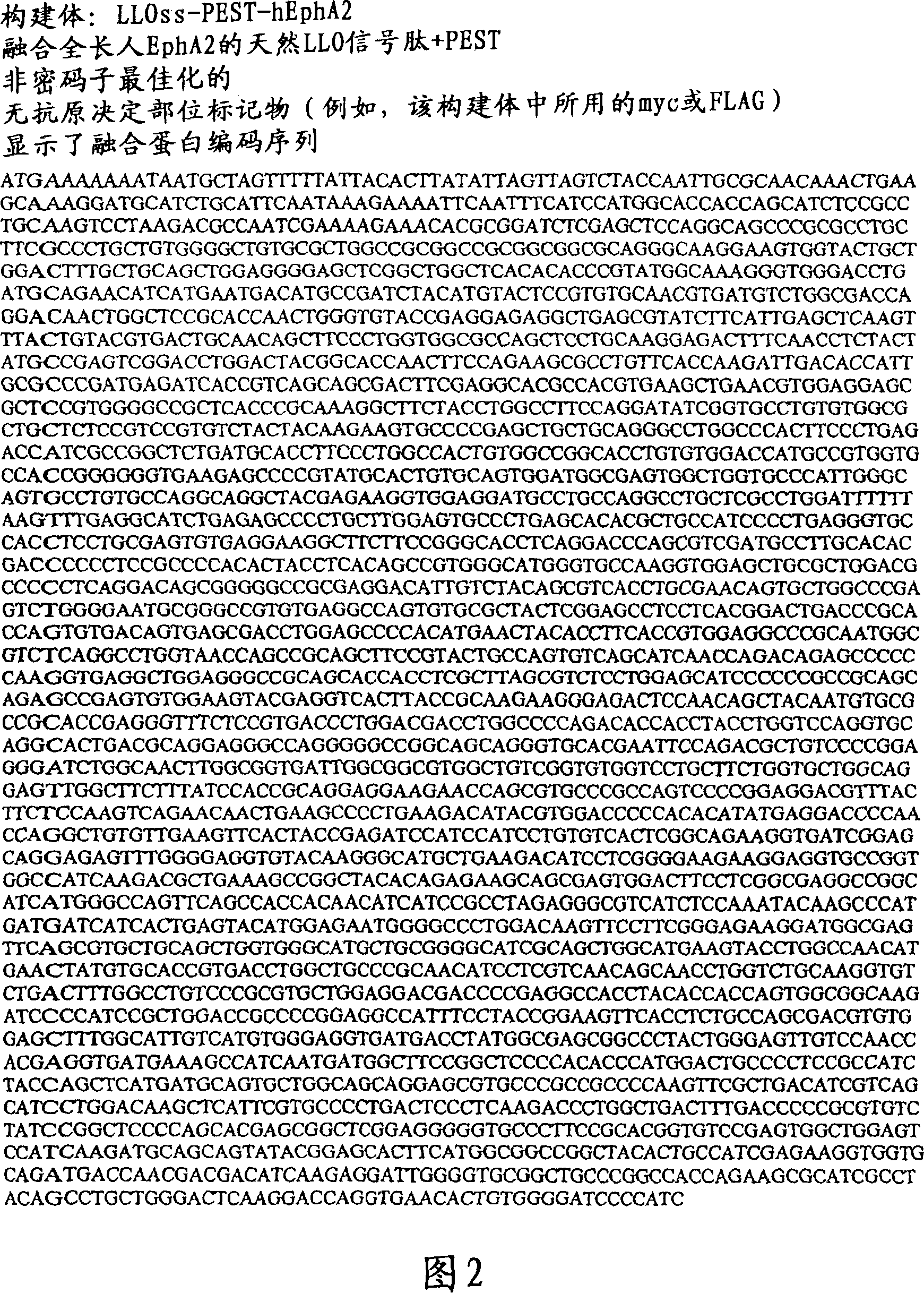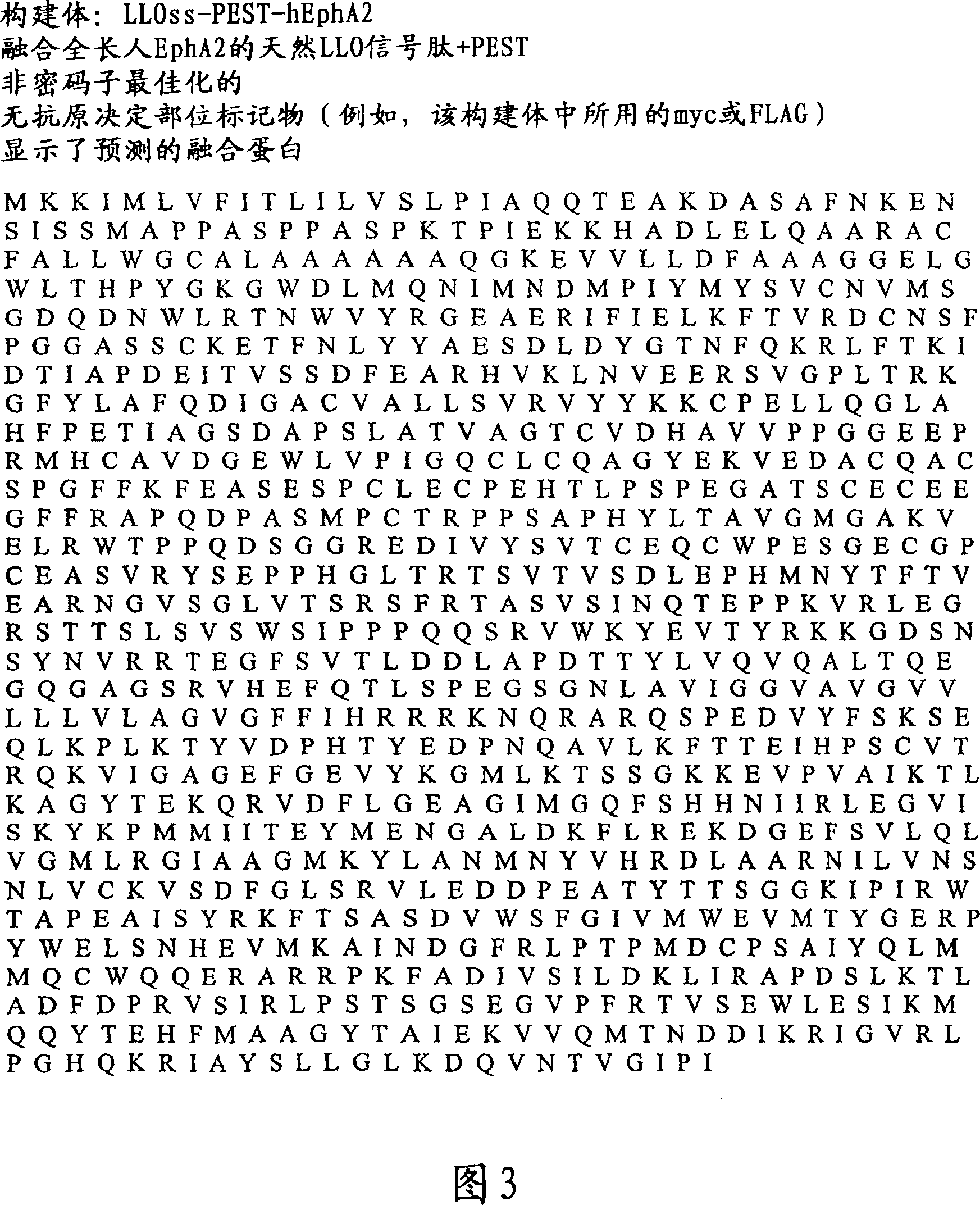Recombinant nucleic acid molecules, expression cassettes, and bacteria, and methods of use thereof
A technology of recombinant nucleic acid, recombinant bacteria, applied in the direction of chemical instruments and methods, bacteria, bacterial peptides, etc., can solve the problem that the sensor or cancer cells cannot be guaranteed to be attenuated, attenuated or inactivated pathogens or cells are unsuccessful, etc. question
- Summary
- Abstract
- Description
- Claims
- Application Information
AI Technical Summary
Problems solved by technology
Method used
Image
Examples
Embodiment 28
[0369] Alternatively, other known intergenic regions or synthetic sequences can be used to construct polycistronic expression cassettes for use in Listeria or other bacteria. The construction of intergenic regions leading to substantial secondary RNA structure should be prevented to avoid unnecessary transcription termination through rho-independent mechanisms.
[0370] Importantly, if secretion of any or all translated proteins expressed from polycistronic messages is required, the signal peptide must be functionally linked to each coding region. In some embodiments, these signal peptides are different from each other.
[0371] Therefore, in some embodiments, the expression cassettes described herein for use in Listeria or other bacteria are polycistronic (e.g., bicistronic). Two or more polypeptides as discrete polypeptides are encoded by a bicistronic or polycistronic expression cassette. In some embodiments, the bicistronic or polycistronic expression cassette includes an inte...
Embodiment 1
[0540] Example 1. Preparation of exemplary mutant Listeria strains
[0541] The Listeria strain is derived from 10403S (Bishop et al., J. Immunol. 139:2005 (1987)). A recognized method was used to generate Listeria strains with in-frame deletions of the indicated genes by SOE-PCR and allelic exchange (Camilli, et al., Mol. Microbiol. 8:143 (1993)). The mutant strain LLO L461T (DP-L4017) is described in Glomski et al., J. Cell. Biol. 156: 1029 (2002), which is incorporated herein by reference. The actA-mutant strain (DP-L4029) is the DP-L3078 strain described in Skoble et al., J. of Cell Biology, 150: 527-537 (2000), which is hereby incorporated as a reference in its entirety, and its prophage has self-healed . (Prophage self-healing is described in (Lauer et al., J. Bacteriol. 184: 4177 (2002); US Patent Publication No. 2003 / 0203472)). actA - uvrAB - The construction of the strain is described in U.S. Provisional Application 60 / 446,051, filed on February 6, 2003, such as L4...
Embodiment 2
[0543] Example 2. Construction of Listeria strains expressing AH1 / OVA or AH1-A5 / OVA
[0544] A mutant Listeria strain expressing a truncated form of the model antigen ovalbumin (OVA) was prepared, and an immunodominant epitope called AH1 (SPSYVYHQF (SEQ ID NO) from mouse colorectal cancer (CT26) : 72)); and altered epitopes AH1-A5 (SPSYAYHQF (SEQ ID NO: 73); Slansky et al., Immunity, 13: 529-538 (2000)). The pPL2 integration vector (Lauer et al., J Bacteriol. 184:4177 (2002); U.S. Patent Publication No. 2003 / 0203472) was used to generate single copies of OVA and AH1- containing a harmless site integrated into the Listeria genome. A5 / OVA recombinant Listeria strain.
[0545] A. Construction of Listeria expressing OVA (DP-L4056)
[0546] First, an antigen expression cassette (pPL2 / LLO-OVA) composed of a hemolysin-deficient LLO fused with a truncated OVA and contained in the pPL2 integration vector was prepared. By attaching tRNA to the PSA (phage from ScottA) Arg -attBB' introduces ...
PUM
 Login to View More
Login to View More Abstract
Description
Claims
Application Information
 Login to View More
Login to View More - R&D
- Intellectual Property
- Life Sciences
- Materials
- Tech Scout
- Unparalleled Data Quality
- Higher Quality Content
- 60% Fewer Hallucinations
Browse by: Latest US Patents, China's latest patents, Technical Efficacy Thesaurus, Application Domain, Technology Topic, Popular Technical Reports.
© 2025 PatSnap. All rights reserved.Legal|Privacy policy|Modern Slavery Act Transparency Statement|Sitemap|About US| Contact US: help@patsnap.com



